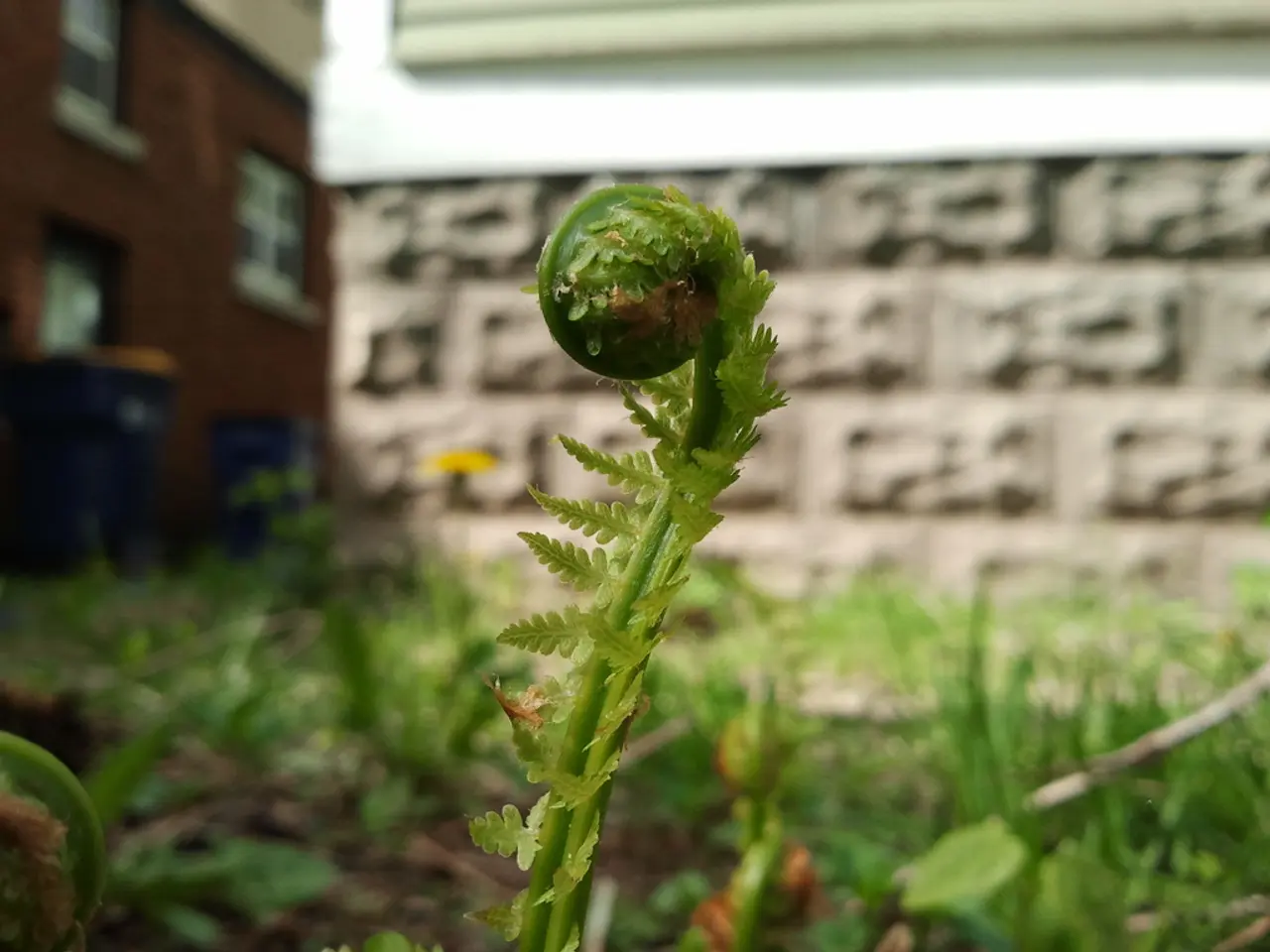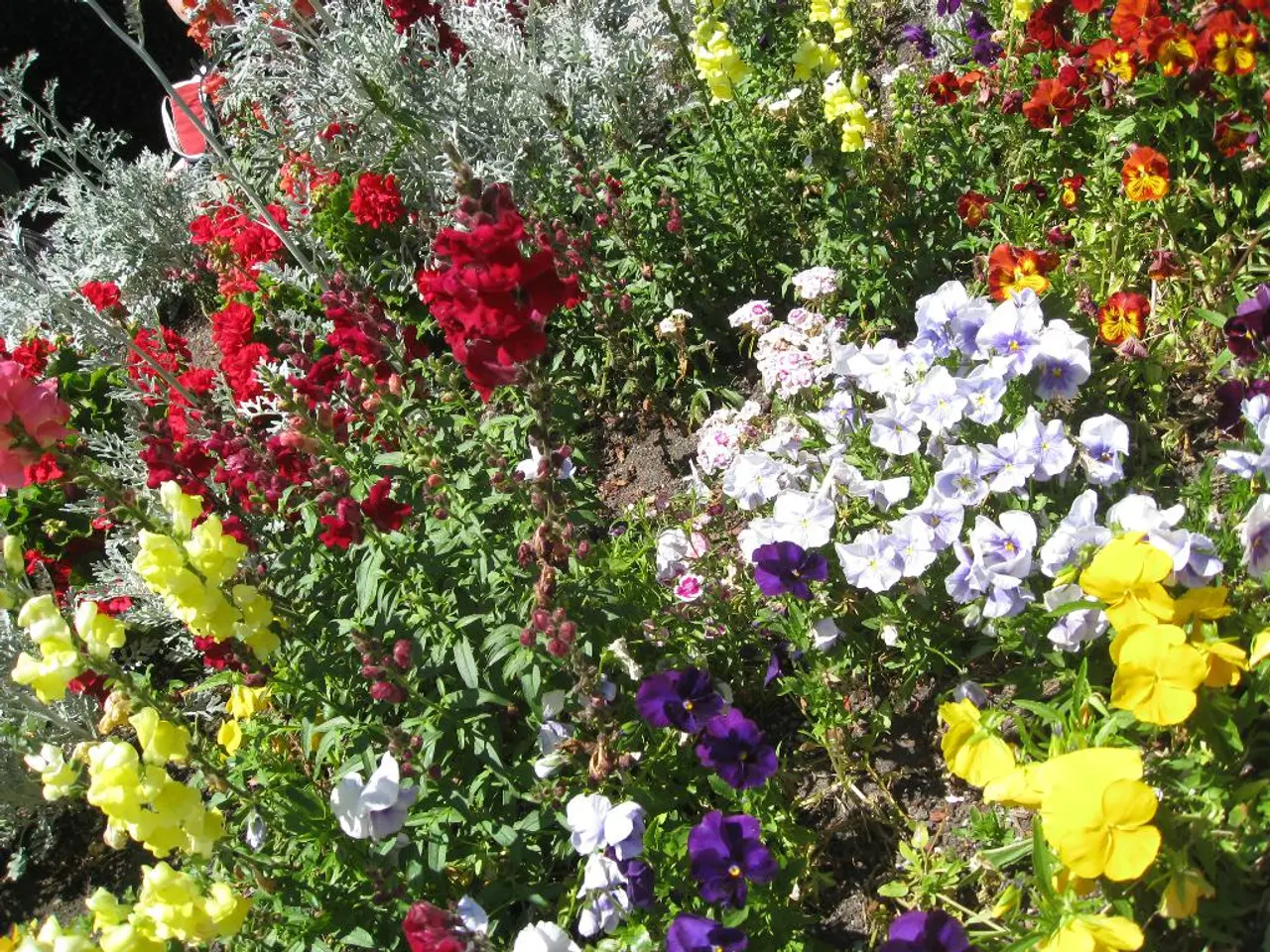Essential Guidance on Light Needs for Watermelon Peperomia: Securing Prime Growth Conditions
The Watermelon Peperomia (Peperomia argyreia), with its compact, bushy structure and striking leaf patterns, is a popular choice for indoor gardening enthusiasts. To keep this plant thriving, understanding its lighting needs is crucial.
Ideally, Watermelon Peperomia prefers **bright, indirect light**. This level of light helps maintain the plant's vibrant leaf colours and compact growth. Direct sunlight should be avoided as it can scorch the leaves, causing browning or wilting. If placed near a window with direct sun, a curtain to diffuse the light is recommended.
For indoor care, south- or west-facing windows with filtered light are generally good spots. The plant does not do well in harsh direct sun or deep shade conditions. North-facing windows with filtered light or east-facing windows are ideal locations, with the latter being particularly suitable due to the soft, indirect light they provide. South-facing windows should be avoided unless diffused with a sheer curtain.
Outdoors, Watermelon Peperomia thrives best in dappled sunlight or partial shade, mimicking its native rainforest understory environment where it receives filtered light under tree canopies. A shady spot with bright, indirect light, such as a covered patio or shaded balcony, is ideal for outdoor growth.
If natural light isn't an option, artificial light can be used as an alternative. Look for grow lights that offer 10,000 to 20,000 lux to mimic the perfect conditions. Place the grow light at a suitable distance from the plant, usually 12 to 24 inches from the plant, and avoid placing the light source too close to prevent leaf burn. Prolonged low light conditions can cause leaves to curl or droop, so ensuring the plant receives adequate light is essential.
Regular pruning can help manage leggy growth, but improving light conditions is the real solution. Signs of insufficient light or stress in a Watermelon Peperomia include yellowing leaves, faded leaf patterns, and leaves darkening. Leaf discoloration can include yellowing leaves or even darkening, where the variegation fades away. A Watermelon Peperomia that lacks light may exhibit slow growth, leggy growth, and weak stems.
In offices or darker spaces, fluorescent lights can help a Watermelon Peperomia thrive as long as it gets about 12-16 hours of light per day. Misting the leaves or placing the pot on a tray filled with pebbles and water can help maintain the needed humidity in drier climates when growing Watermelon Peperomia outdoors.
By providing the right lighting conditions, you can help your Watermelon Peperomia maintain its vibrant, healthy appearance and continue to thrive indoors or outdoors.
- To maintain the Watermelon Peperomia's vibrant leaf colors and compact growth, consider placing it near a south- or west-facing window with filtered light, an east-facing window, or a North-facing window with filtered light, as the plant does not do well in harsh direct sun or deep shade conditions.
- If you don't have access to natural light, a Watermelon Peperomia can also thrive under artificial lights providing 10,000 to 20,000 lux, accompanied by regular misting or placing the pot on a tray filled with pebbles and water to maintain humidity, particularly in drier climates.




